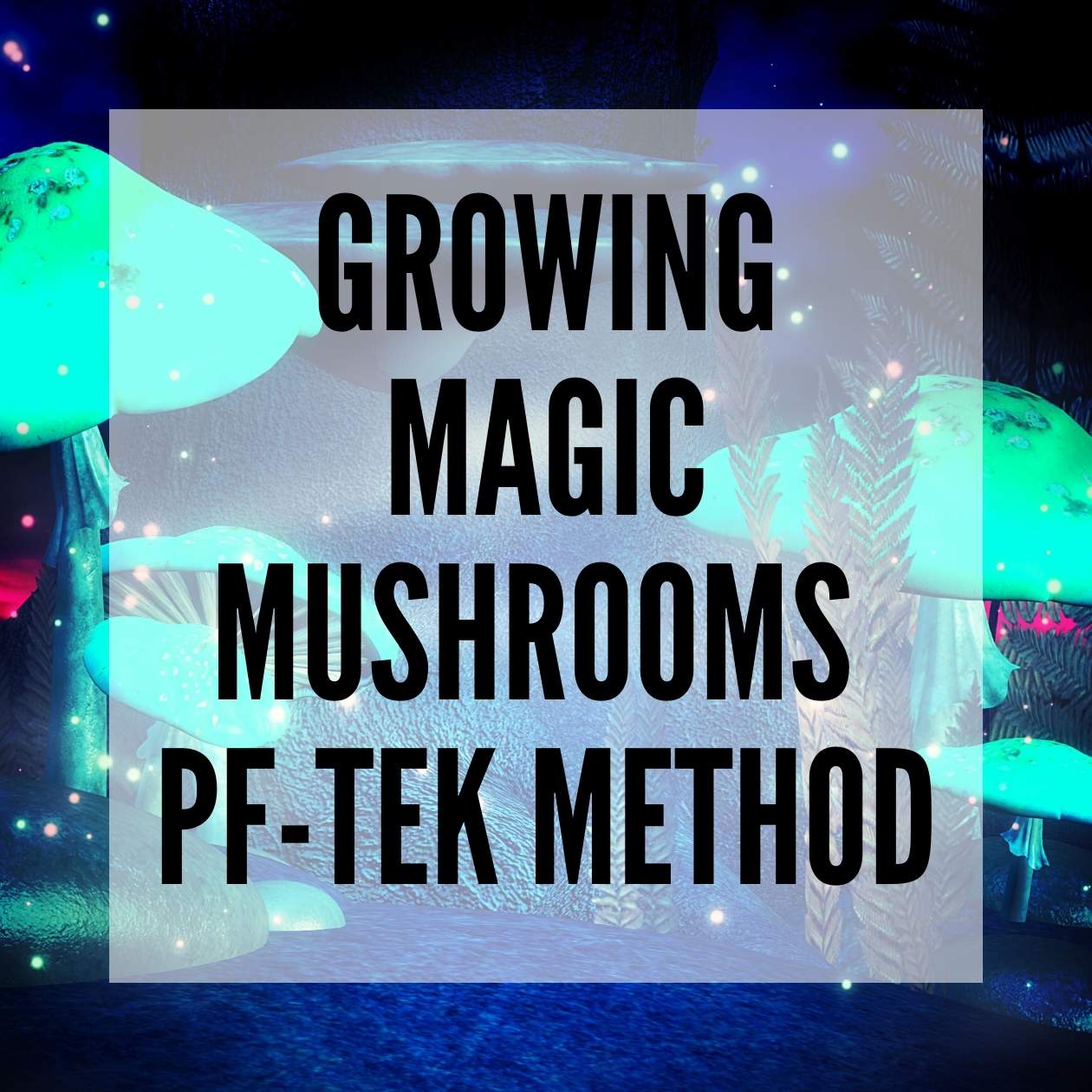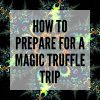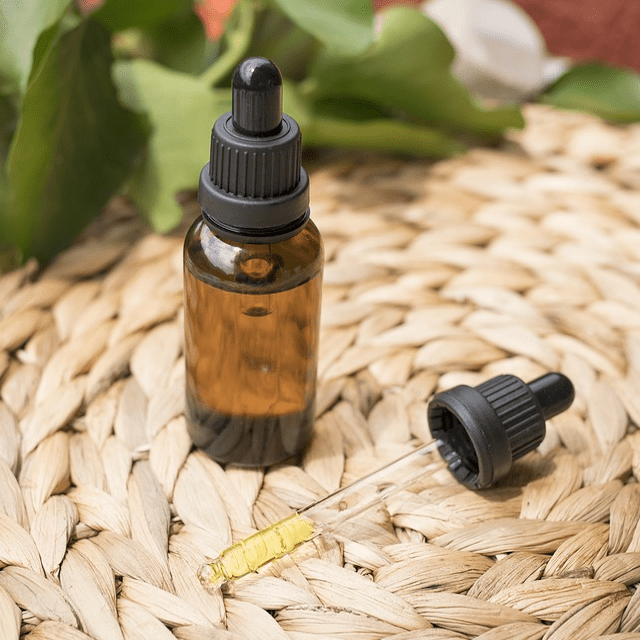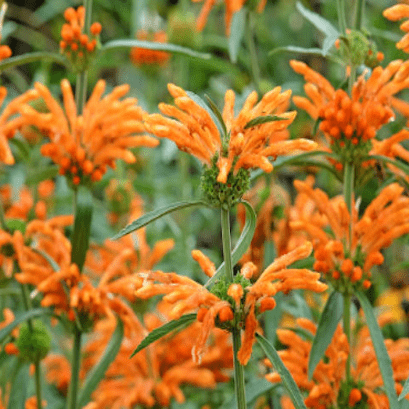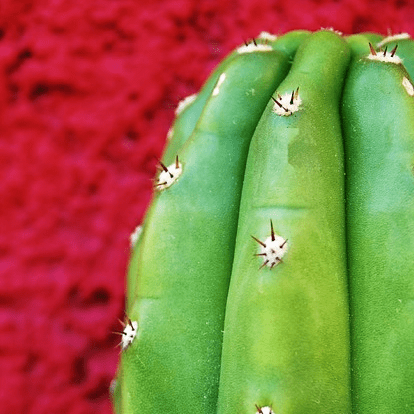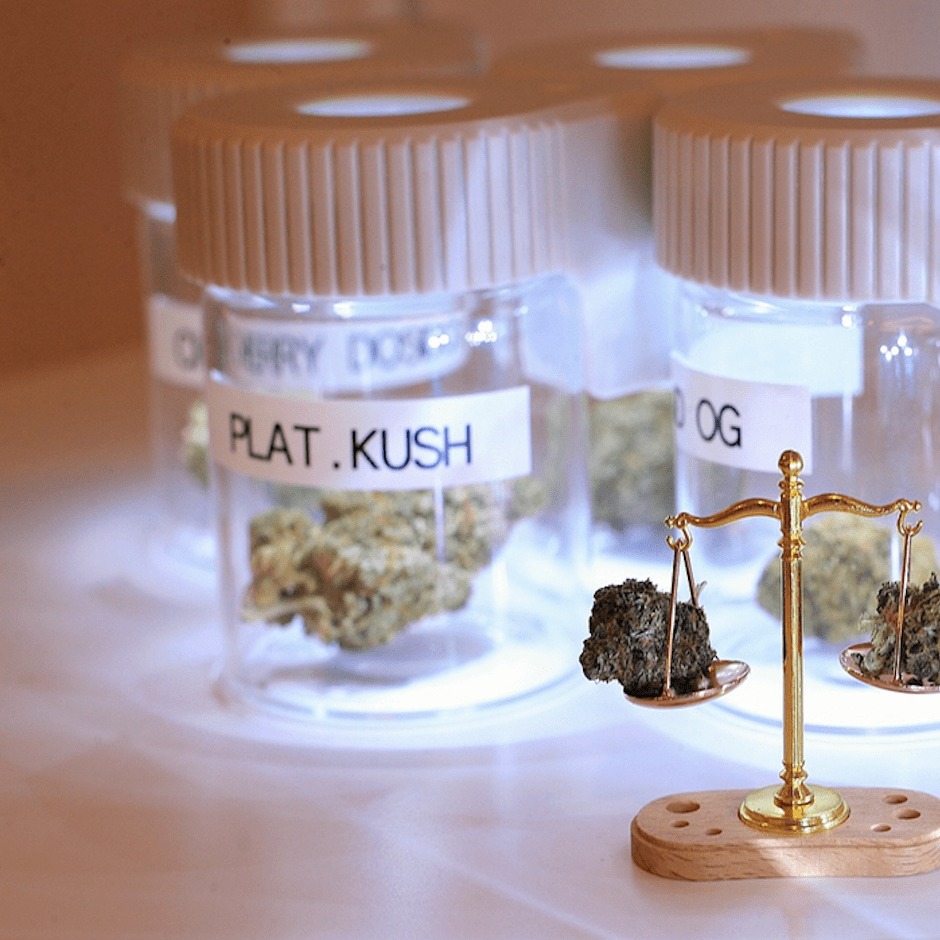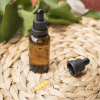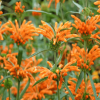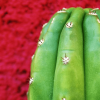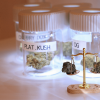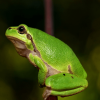The PF-TEK magic mushroom cultivation method is one of the cheapest ways to grow your own magic mushrooms in the comfort of your own home. That is why the method is also very popular. Don’t feel like setting up the PF-TEK method yourself? Then simply choose our Magic Mushroom grow kits .
To start growing your own magic mushrooms using the PF-TEK method, you need your own magic mushroom growing track:
- Spore Syringe
- vermiculite
- Brown rice flour (it can be rye grain, but the most popular choice is brown rice flour)
- Clean water (distilled or similar)
- Glass containers (~250ml wide mouth masonry containers will work fine)
- Fruit chamber (large plastic hopper with translucent top)
- Pressure cooker or a large container
- Round metal rack (for the pressure cooker or container you are going to use)
- Mengvat
- Sturdy aluminum foil
- sieve
- A big spoon
- Mist bottle (best if you have two misters, one for water and one filled with alcohol sterilization spray)
- Permanente marker
- Sterilizing flame (alcohol lamp is the best way, but a simple lighter or butane burner is also good)
Depending on the environment, purchasing antibacterial soap, a face mask, and some alcohol wipes may also be a great idea (it’s not absolutely required, but the more sterile everything will be, the higher the chance of success).
You probably already know most of the stuff above, but what is vermiculite and where can I find it? Don’t worry, it’s not some chemistry lab drug that’s hard to get. Vermiculite is a horticultural product that can be found in most horticultural stores (sometimes even in pet stores as cat litter). Also don’t be afraid if you touch vermiculite, it may feel like it’s some kind of plastic/rubber, but this is a misconception. It is just a simple mineral that can be found all over the world and there is nothing toxic about it.
We hope you have all those extra sterilization items (gloves, mask, alcohol wipes and some antibacterial soap), because this first step is the most crucial part of the process. How sterile and clean you are can make or break magic mushroom cultivation.
Table of Contents
STEP 1 – PREPARE THE SUBSTRATE
- Add vermiculite to the mixing bowl (the amount you need should be chosen based on how many tubs you have. Each tub will need about 3/4 vermiculite and 1/4 brown rice stream.
- Slowly add some water to the bowl, stirring with the spoon. The goal is to soak the vermiculite completely, without allowing excess water to settle at the bottom of the bowl.
- Once the vermiculate is evenly wet, try to remove the excess water from the bottom of the bowl by tilting the bowl to the side and holding vermiculite with your hand and/or spoon. If you think there is too much excess water, it may be a good idea to put all the vermiculite in a strainer and let it drip. Try to make sure that the vermiculite is completely wet, but there is no excess water.
- Add your brown rice flour to the container of vermiculite. Mix it well. The goal now is to make sure that vermiculite and brown rice flour are mixed as well as possible. The brown rice should coat all the vermiculite evenly. This gives the spores a fully colonizable and fertile substrate.
- After your mixture is ready, carefully add it to your containers. Try not to spill or put pressure on your substrate and keep it as fluffy as possible to allow air to flow freely. Do not fill your containers completely, leave at least 1 cm free from the top. Be as careful as possible not to smear the inside of your container. If that happens, clean it with a clean paper towel (sterile!!). Any residue that is not part of the substrate can contain contaminants and ruin your entire container.
- After you have filled the trays with the substrate, make sure to add an extra layer of dry vermiculite. This prevents and acts as a filter against any air contamination during the process.
STEP 2 – STERILIZE
- Take some foil, fold it in half and place it over your containers. Make it as tight as possible, you are trying to make a good fitting lid for your bins. If you choose metal lids, make sure they have ~4 small syringe holes in the trays (predrill them). You can apply two layers of foil to make sure the bins are well covered.
- If you are using a pressure cooker, put ~2-3cm of water in it. Then stack the containers without breaking the foil, close the lid and slowly bring the pressure cooker down to about 15 psi. Make sure to do this slowly to minimize the risk of cracking the trays. Then lower the heat a bit and let the trays sterilize for about an hour.
- If you are using a simple large container, place the metal rack (standard) on the bottom of the container, fill the container with ~2-3cm of water. Stack the containers without tearing the foil, put the lid on and bring the container to a boil over a low-medium heat. Let the trays sterilize for 1.5-2 hours, the water will run out if you do this, so make sure to top it up with pre-boiled kettle water every 15 minutes or so.
- After sterilizing the containers, leave them in the container or pressure cooker for at least 5 hours. It is best to just leave them overnight.
STEP 3 – VACCINATION
- Wash your hands well and sterilize your workplace. During this part of the process, everything will be most sensitive to the risk of contamination, so make sure you work as sterile as possible.
- Take out the cool trays and place them on the surface you just cleaned. Have the flame source and spore syringe ready.
- Shake the syringe (or culture vial) very well to break up any spore clumps. Fill the syringe with the spores from the ampoule, if you have not already done so.
- Carefully peel off the foil on top of the containers so that you can quickly remove them when you spray them.
- Warm the needle of your syringe and sterilize it that way. Then remove the foil and insert the syringe into the small holes in the lid of the container you prepared earlier. You have to penetrate the dry vermiculite layer and reach the substrate.
- Gently push in the needle and inject ~0.25ml at one spot. You should prepare each tray with ~4 spots with a total of 1-1.5ml of spores. Theoretically, you don’t need to re-sterilize the needle for each new hole, but you do need to sterilize the needle with a fire source before inoculating each new container.
- Put the foil lid back on the container before moving to another container and sterilize the needle with the fire source.
- Repeat this process for each bin you have. Make sure to seal them tightly with foil after you’re done with your inoculation.
- You can now identify (mark) your bins with the date and substrate of the mushrooms you inoculated them with if you feel the need.
Important: The injection process is the part where spores are very vulnerable to any kind of contamination, make sure you sterilize everything as well as possible. If for some reason you need to take a break or do something else, make sure to wash your hands and sterilize the area as best you can.
Step 4 – Incubation
- Now is the time to be patient and wait. Store the trays in a dark place with an average temperature of ~21-27°C. Best results can be achieved with a stable 27°C, try to keep the trays warm (but not hot!) as lower temperatures will incubate longer, plus growth will be slower at each step of the cycle.
- If the conditions for the bins are perfect, you can expect the mushroom mycelium to start living in 3-6 days. What you want is white, fuzzy spots on the vermiculite.
- The key to knowing if everything is going well is the color of the mycelium: it must be pure snow white, no other colors can be present in the tank. If you notice that there is gray, black, green, pink, blue or any other color in the container, throw it away without even opening it. Don’t risk the life of other bins by opening the lids of infected bins, throw them away as soon as you notice that the life in the bin is not pure white.
- If conditions are perfect, it can take 2-4 weeks for the mycelium to fully colonize. A fully colonized tank means that all the substrate in the tank has been taken over by white mycelium and you can barely see any uncolonized substrate in the tank.
STAP 5 – PINING
- After the tank is fully colonized by mycelium, it’s time to help pin the mushrooms. You can keep your bins in a lower ~21°C temperature and you can expose them to light (6-12 hours/day indirect light should be fine). Never expose your colonized substrate or mushrooms to direct sunlight.
- This may vary depending on the substrate of your choice, but the first pins should be seen from 5-15 to 30 days after you bring in the sunlight.
- It is best to start the pinning process while your mycelium is still in the tank, as this lowers the potential risks, but you can also start the fertile part of the growth cycle even if no pins are visible (after you have your containers have given them the daily light they need to start pinning).
- If you think the pins haven’t been visible for too long, you can try putting your container in the fridge overnight (make sure to put it back in a plastic bag to be as sterile as possible). These types of cold shocks usually help to start the pinning process in cases where the pins are not visible for too long. If you decide to do this, you should start the fruiting process the next day!
STEP 6 – FRUITING
- You need a fruiting chamber for that. The most common fruiting chamber is a clear plastic storage box, but you can be more creative as long as one condition is met: it must be easy for indirect light to reach your colonized “cakes”.
- If you can, sterilize inside and outside your amniotic chamber as best you can before using it. Remember to always wash your hands and sterilize the area before working with it.
- Place a 1-2 cm layer of perlite on the bottom of your fruiting chamber. Water the perlite so that it becomes moist. Make sure to use demineralized water or at least use pre-boiled, lukewarm water to lower the risk of contamination.
- Remove the lids and foil from the containers. Place them upside down (that’s why you needed wide-mouth containers in the first place) on the perlite. Some people like to place some sterile foil about the size of the “cake” on top of the perlite and put only their “cakes” on it. It’s not really necessary, but it’s a good idea if you’re trying to keep them as clean as possible.
- If it is difficult to remove the colonized mycelium from the trays, try holding the inverted tray and taping gently. This process can become extremely difficult if you have had a very spontaneous and fast pinning phase, as you are not allowed to damage the small pins. Try to loosen the colonized substrate in the tank as gently as possible, if nothing works, sterilize a knife and carefully go around the inner wall of the tank. You’re not trying to cut anything, you’re just trying to loosen the mycelial cake from the wall of the tank (use this method only as a last resort).
- Space your cakes at least 3-5cm apart as magic mushrooms will grow on the side of the cake and they need room to do that. Close the lid of the container and place it somewhere that has light all day (artificial light works too), but make sure your mushrooms are not exposed to direct sunlight.
- After you’ve placed all the cakes inside, it’s time to take care of your little colony. Once a day, open the lid and let in some fresh air, you can ventilate the inside of the box a little.
- Every time you open the box, check the bottom layer of the box (perlite). It should be moist all the time, as this is where your mushroom colony gets all the humidity from. This means spraying perlite into the mist if you think it is getting dry, but make sure you don’t accidentally spray water on your cakes or shrooms themselves, all the water should go straight to perlite and not end up on the cakes.
- Enjoy the rapid growth of your magic mushrooms: it should take no more than 7-14 days before you can harvest them. After small mushrooms appear, keep a close eye on them, because you don’t want to miss the right moment to harvest them. In some perfect conditions, mushrooms can double in size in a matter of 24 hours.
- After the appearance of small mushrooms, they need to grow for 2-5 days before they are ready to harvest. Don’t rely so much on the time as focus on how they look. Once a mushroom cap tries to open itself, you will harvest the entire flush. Don’t try to gain more by growing them bigger, large shrooms tend to be less potent in potency so medium shrooms just before they open is what you aim for for best results.
STEP 7 – HARVEST
- When the time is right, wash your hands well and harvest mature mushrooms by gently twisting them. If you see “unhealthy” looking black-red mushrooms, harvest them. They will be small and look like they haven’t developed properly. You must also harvest them, but do not use them: separate them and throw them away.
STEP 8 – FLUSHES
- Your entire crop is called a flush. After you’ve had your first flush, continue caring for the cakes in the fruiting chamber in the same manner (air and humidity) and you can expect about 4 more flushes to come.
- Flushes can vary in size and potency (not radically, but there can be a slight difference between the different flushes).
- There is another tactic that can allow you to get better flushes after you harvest your first flush, it’s called dunking.
- If you decide to dunk your cakes, clean your hands and take your mycelium cake from the fruiting chamber. Place in a water-filled (clean or demineralized) container (the container should be large enough to completely submerge the cake in water). Try to place something on top of the tray in a way that puts pressure on your cakes so that they remain completely submerged (otherwise they will float).
- You can refrigerate this tray for at least 12 hours, but timing is important here as the maximum time the cake can stay there is 24 hours. If you keep the cake there longer, it could drown.
- Carefully take the cake out and dry it with a clean paper towel. Then place it back in the fruiting chamber and continue the fruiting process as usual (air and atomization of the perlite). You can repeat the dunking after each rinse if you feel it is necessary.
Endnotes
It may seem like you need to know a lot about how to grow magic mushrooms, but actually the process of growing magic mushrooms at home is quite simple. You don’t need to have full lab conditions to do this and just working sterile is key to every step.
You can’t be too sterile! This method requires the lowest investment and is easy to master for any psychonaut. If you’re reading this entire guide and think it might be too hard, we recommend taking a few days to re-read it. You might realize that the process is actually very simple and that your dream of growing magic mushrooms at home is much easier than you thought.
Buy the best magic mushroom spores for growing with PF-TEK here!
